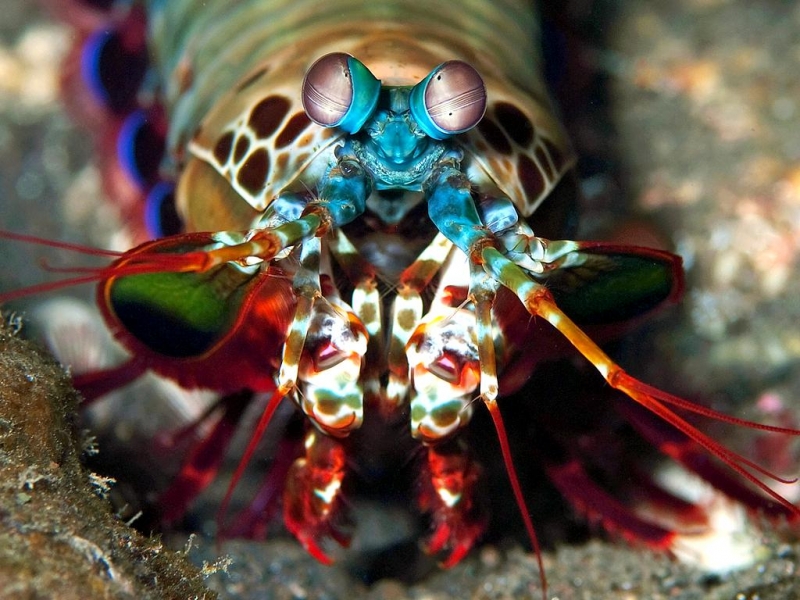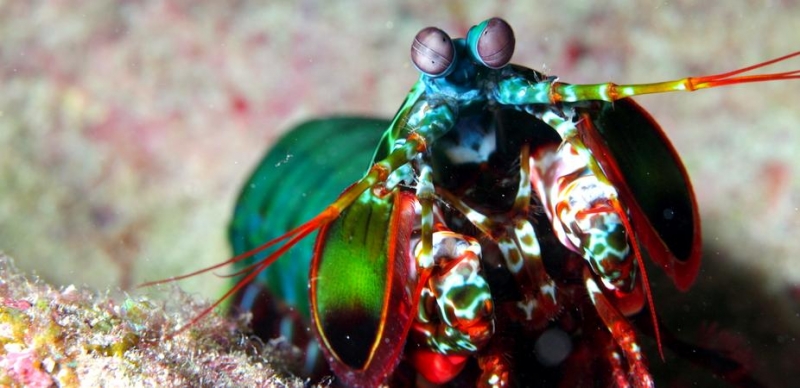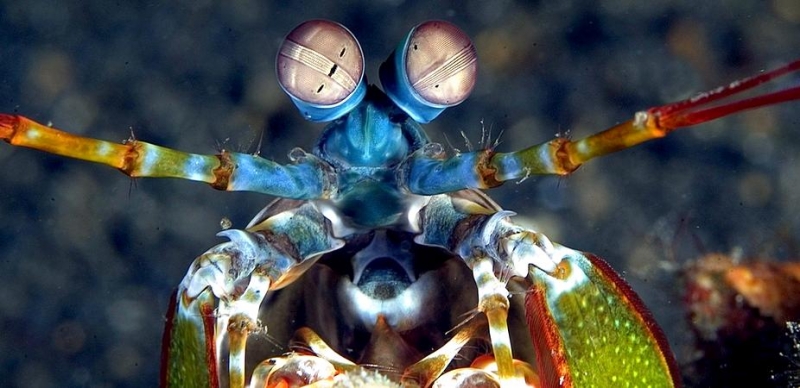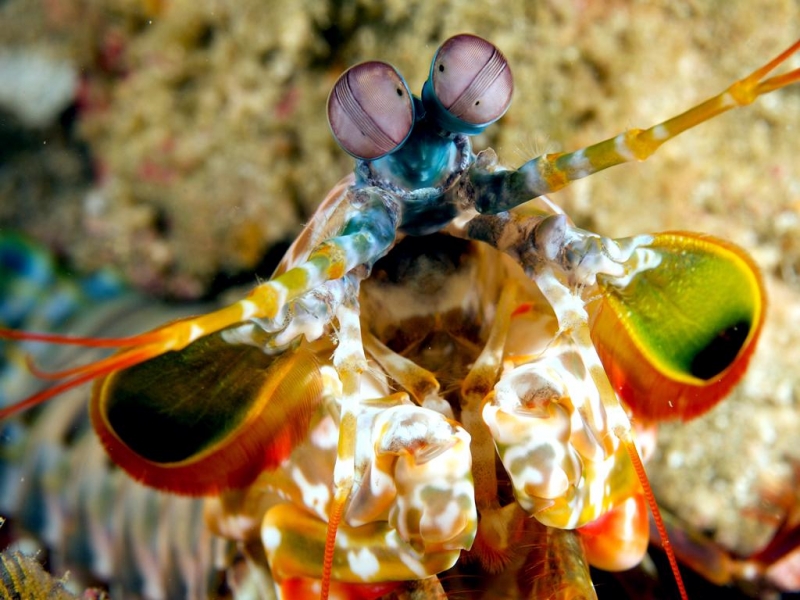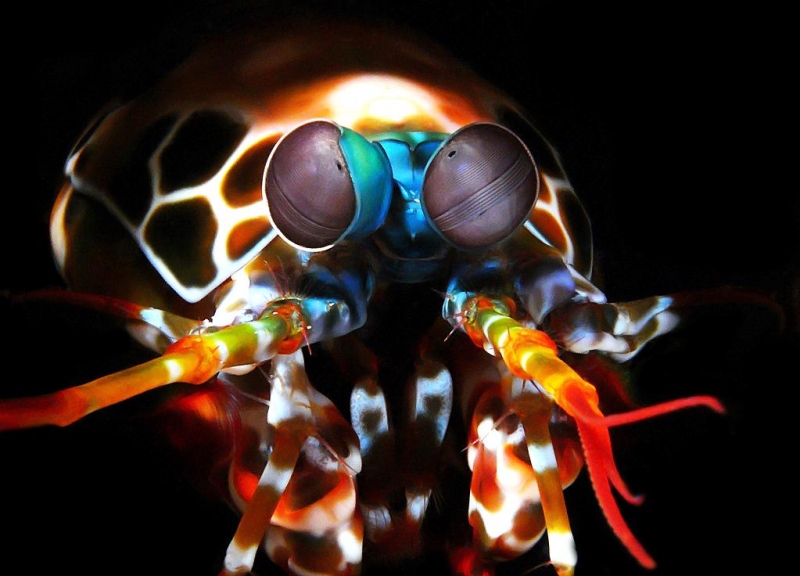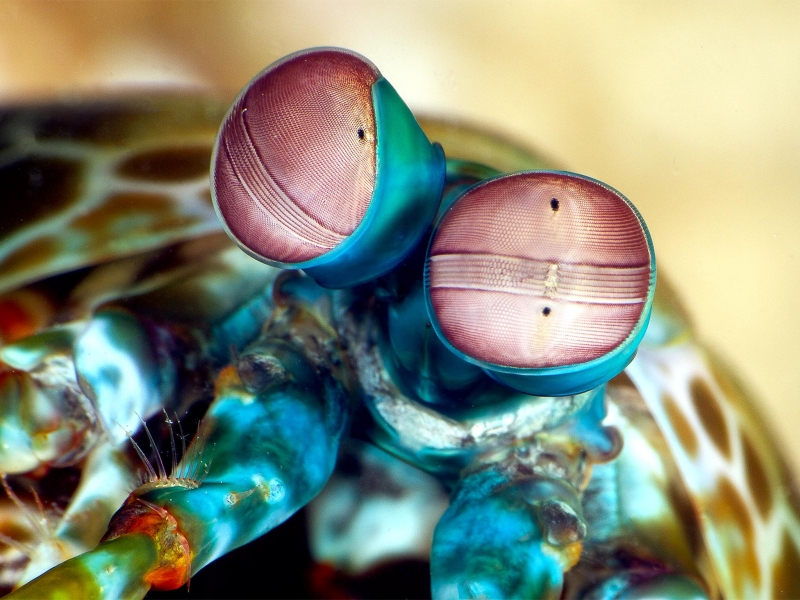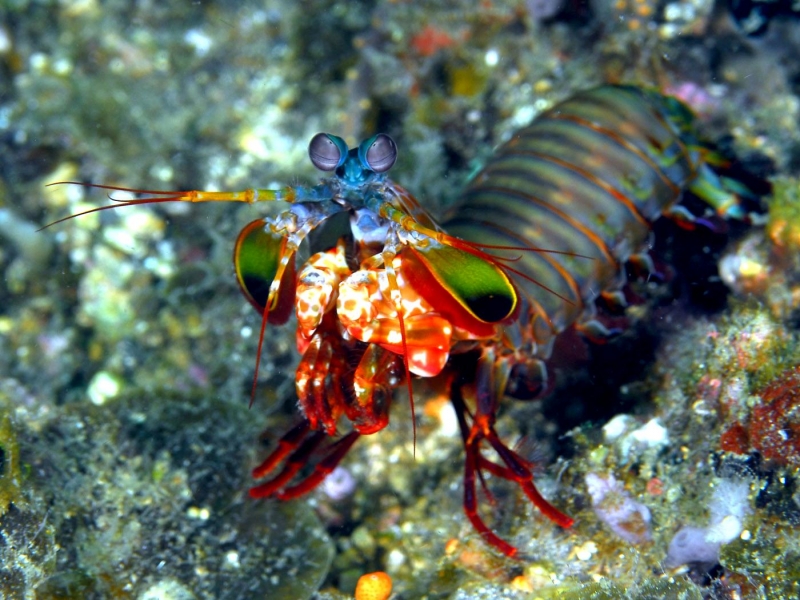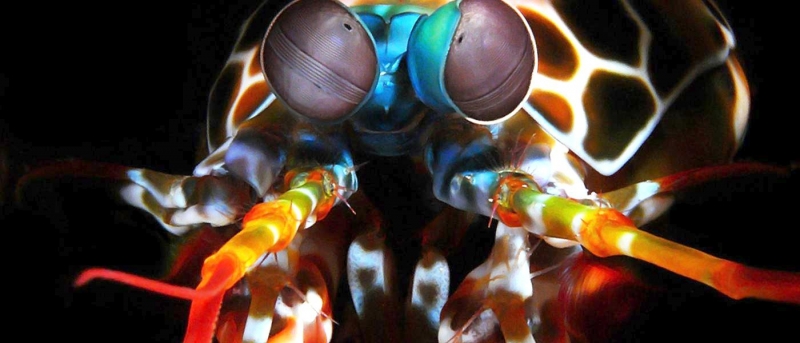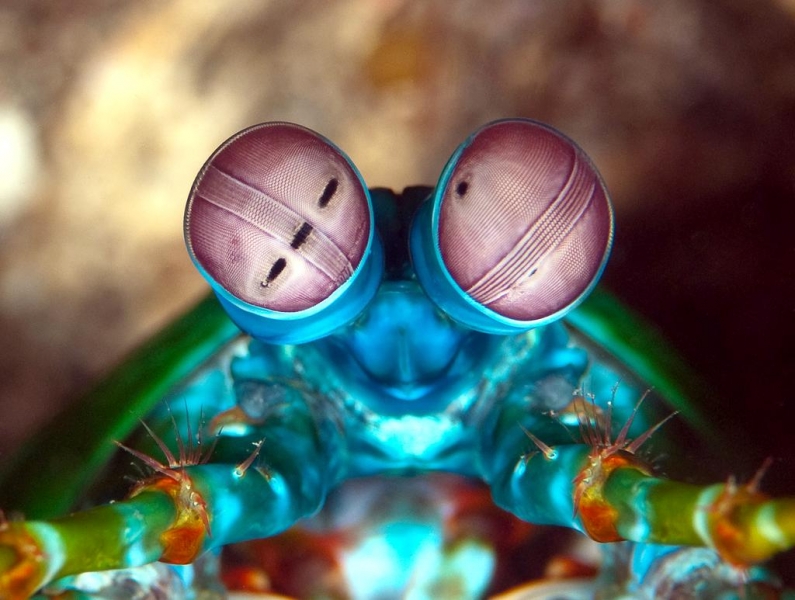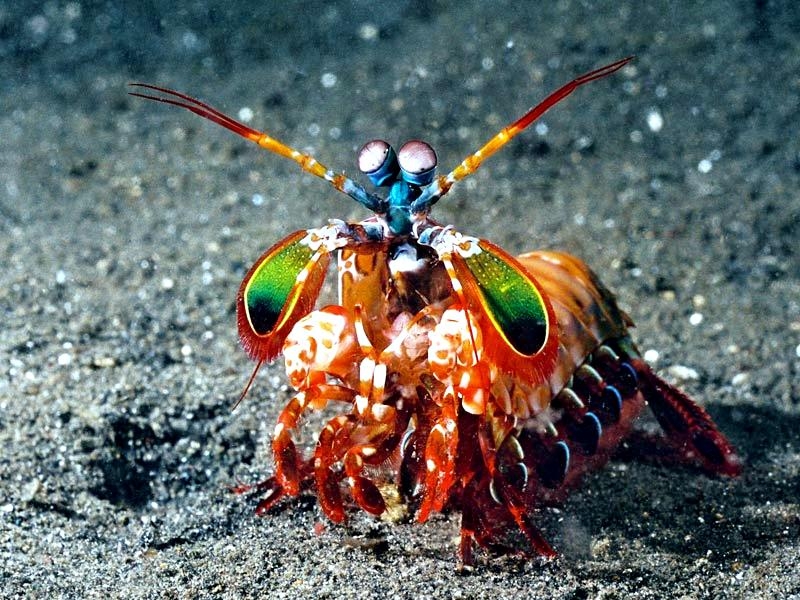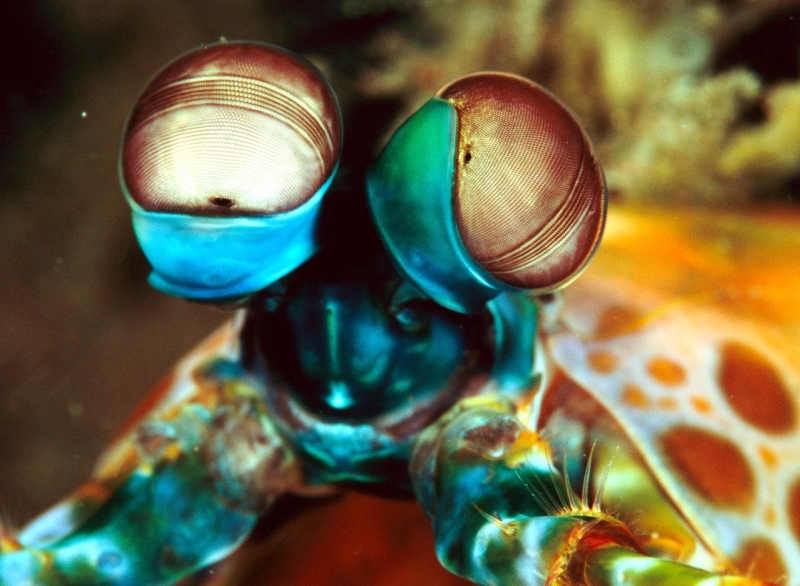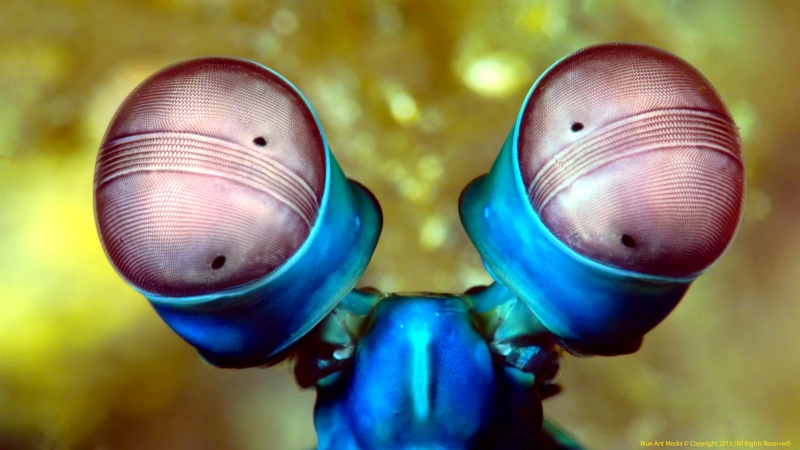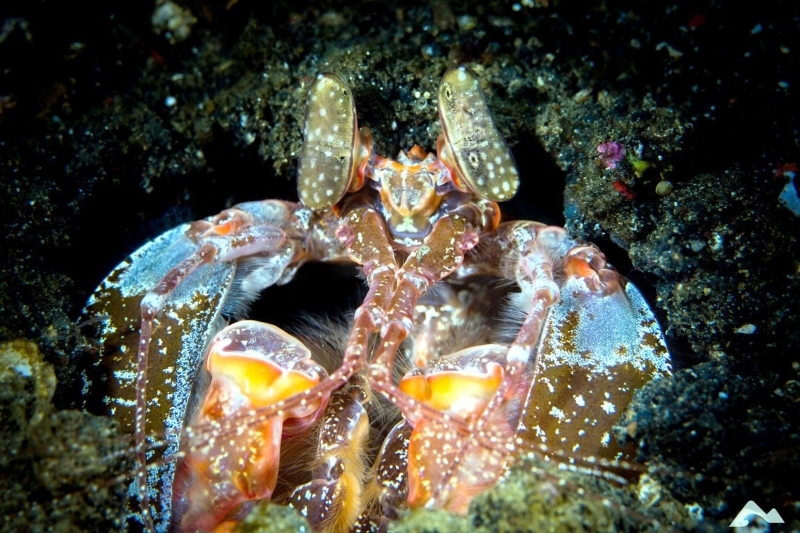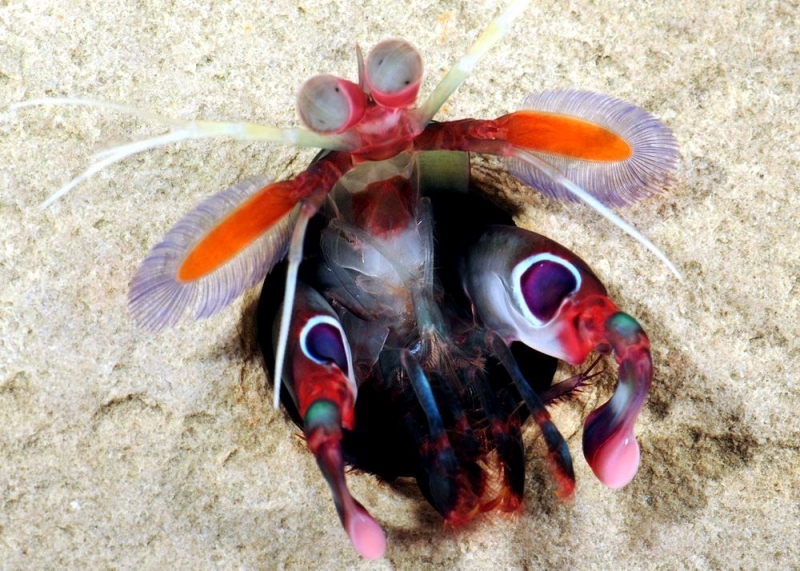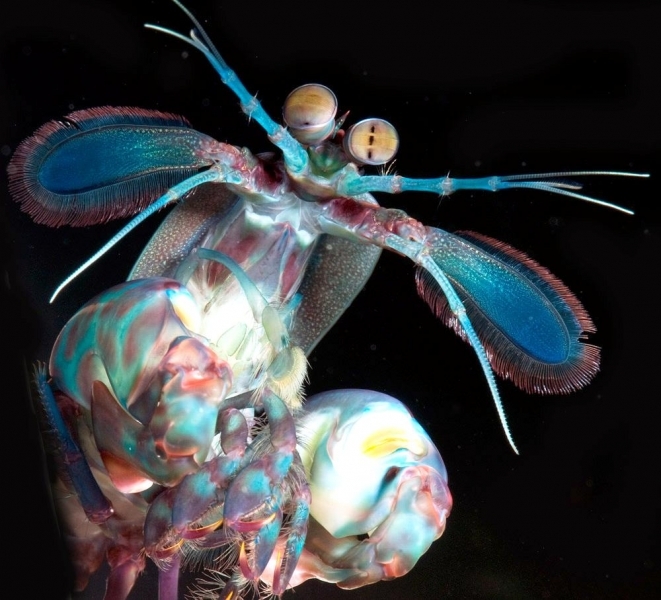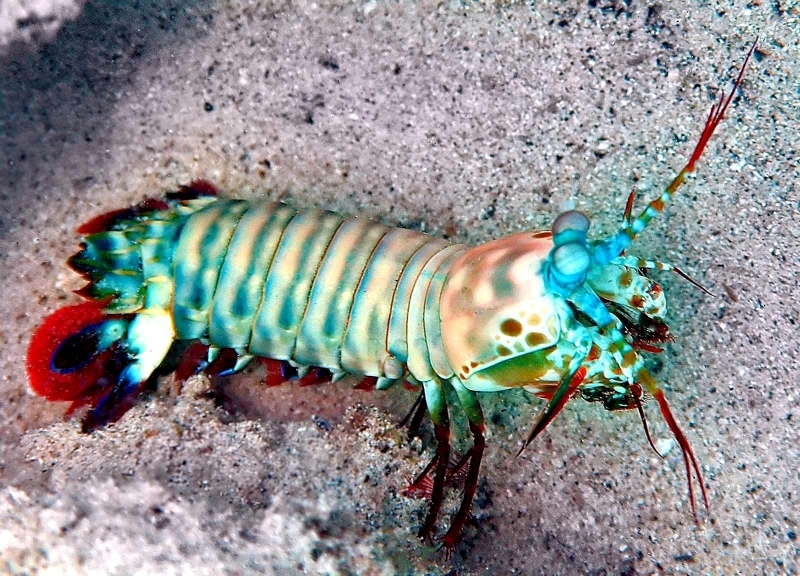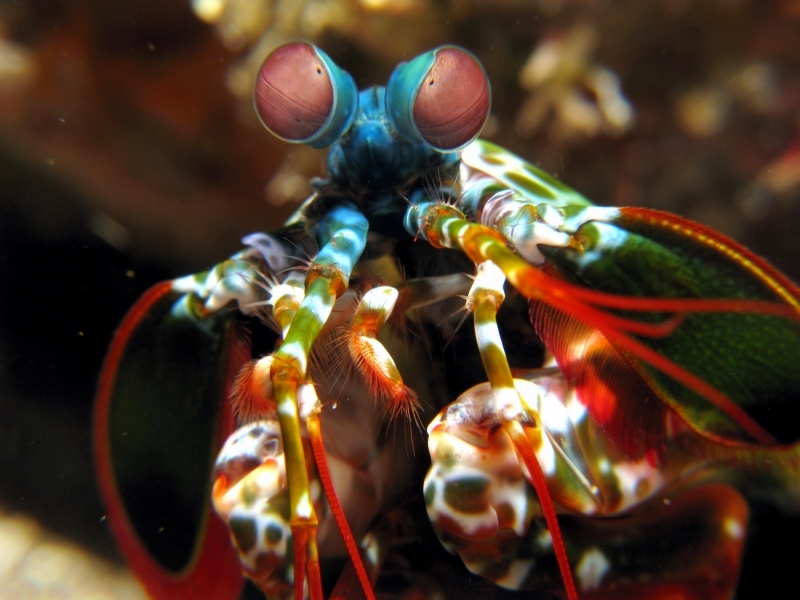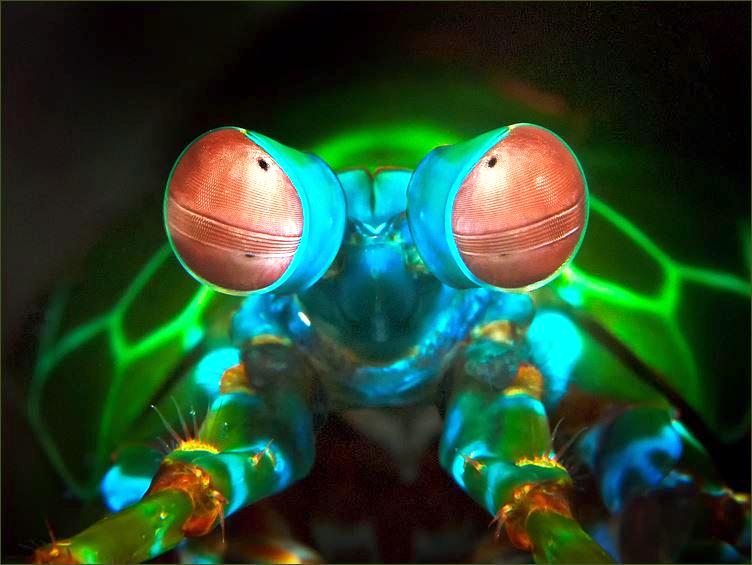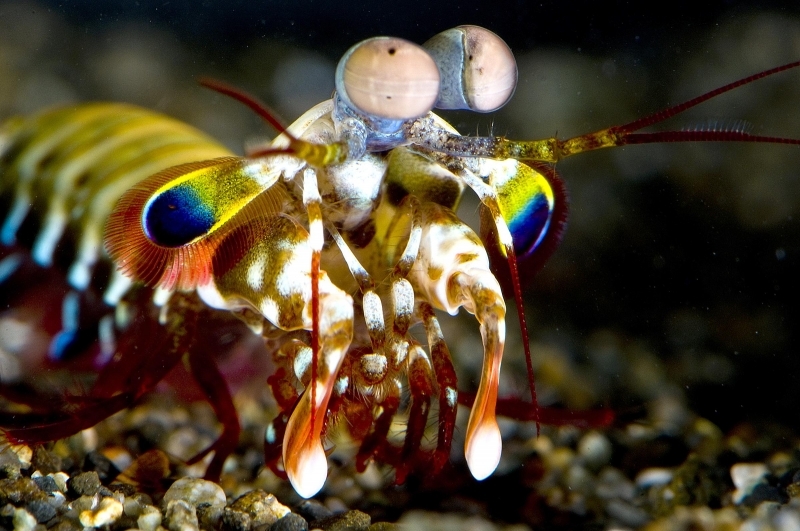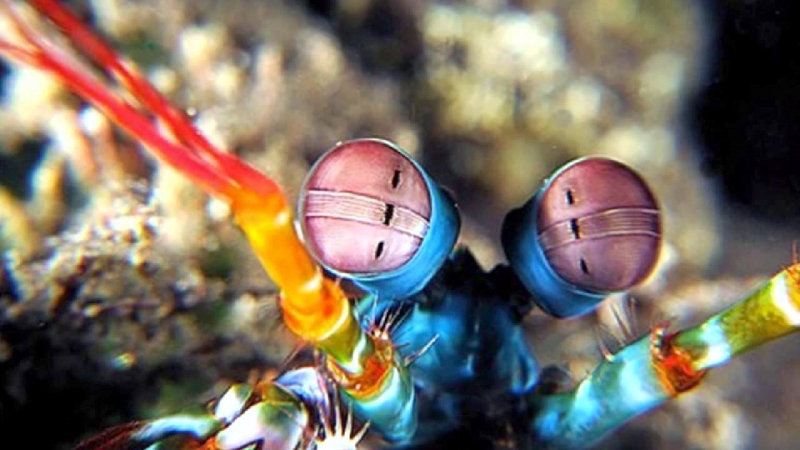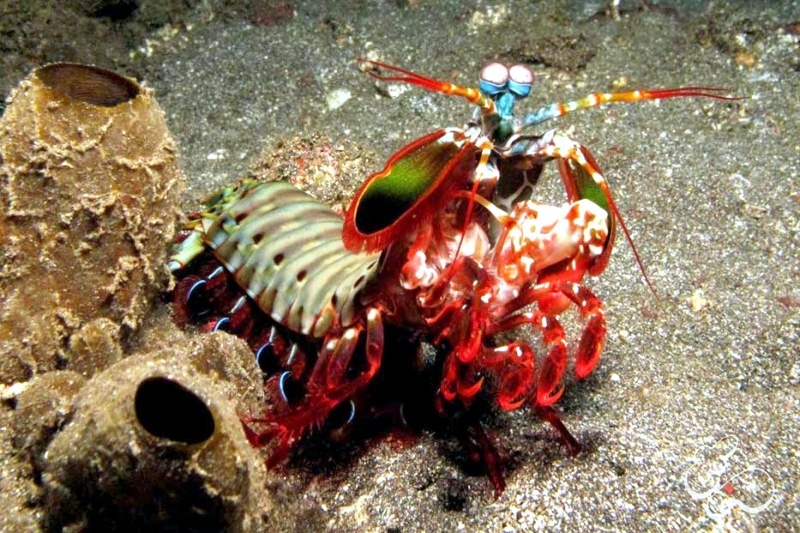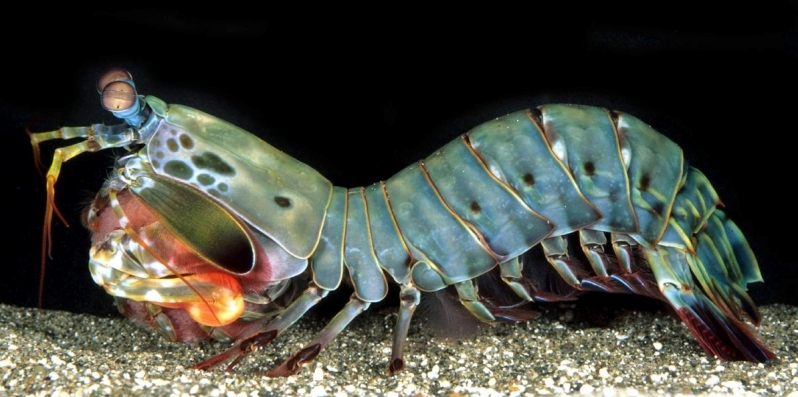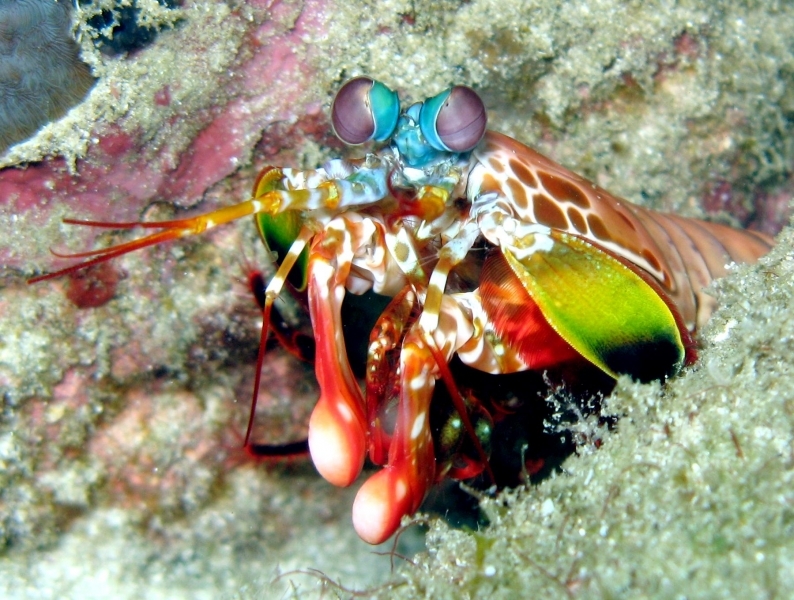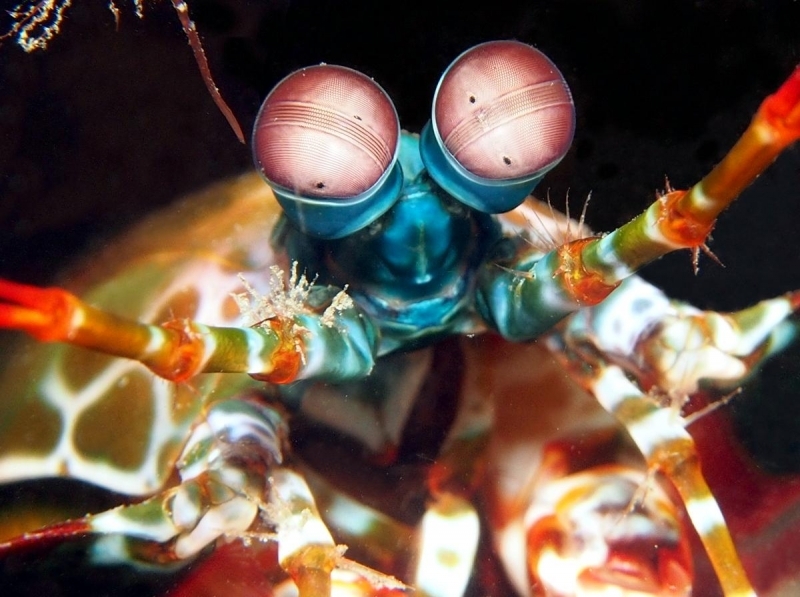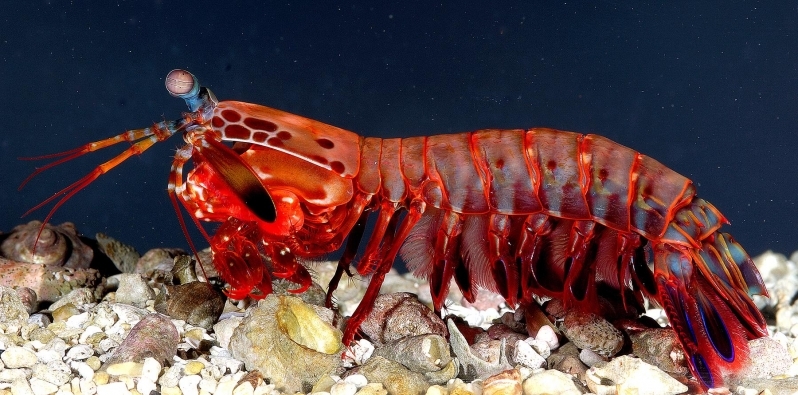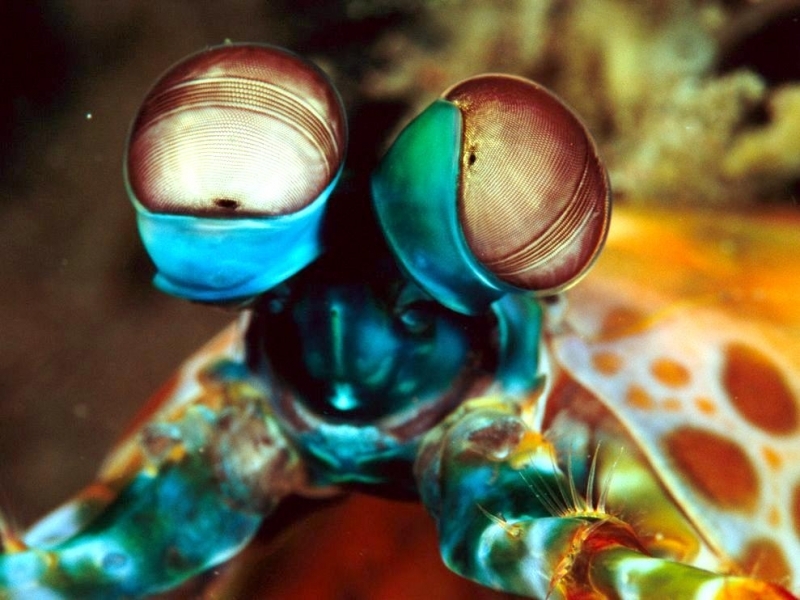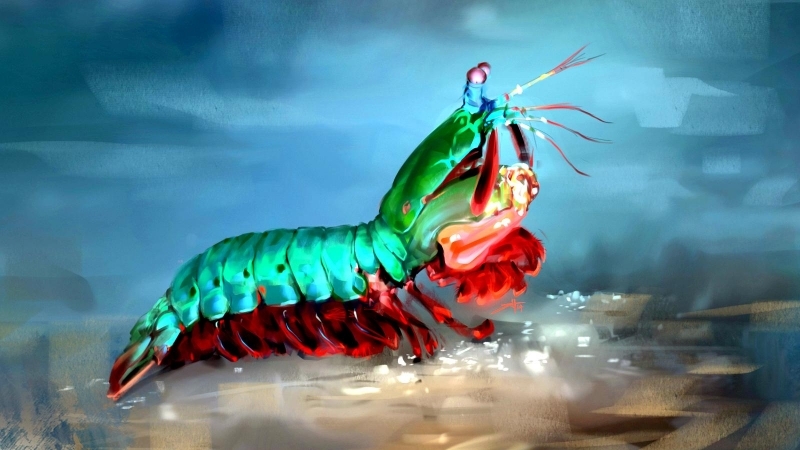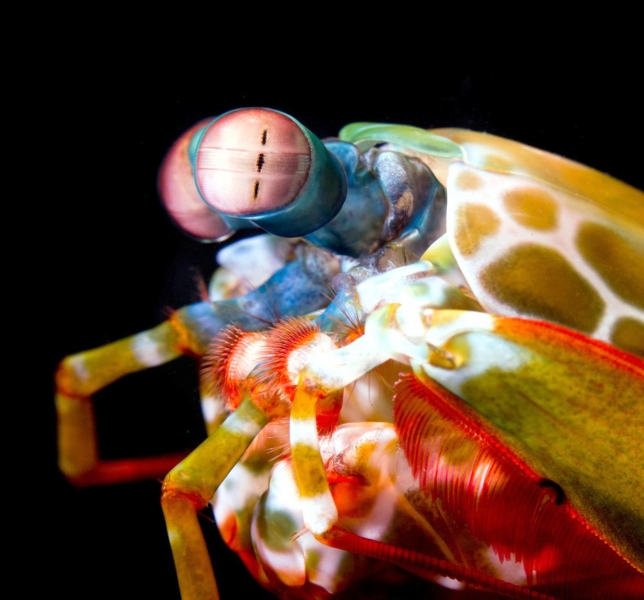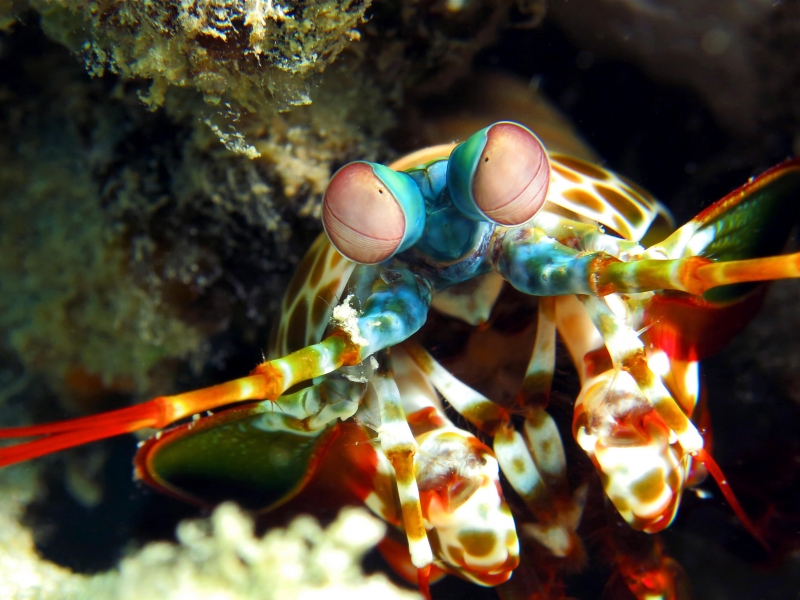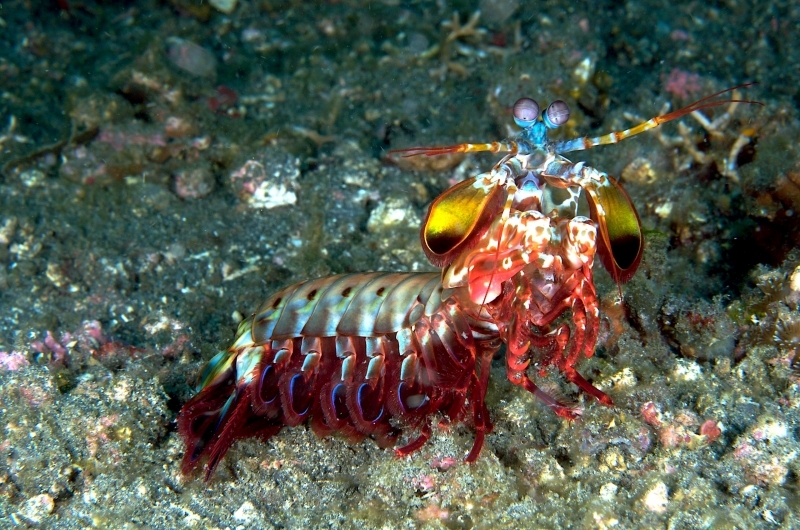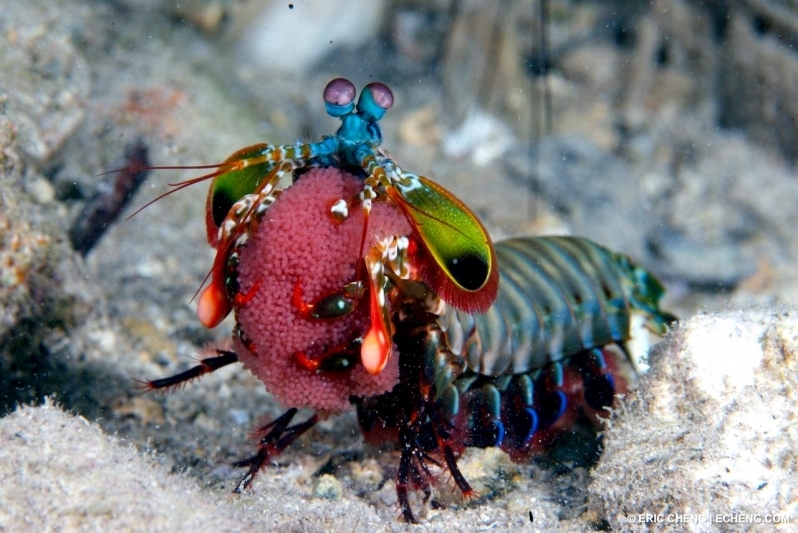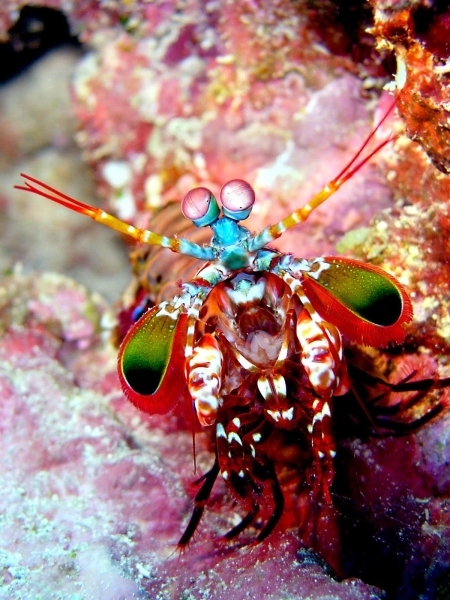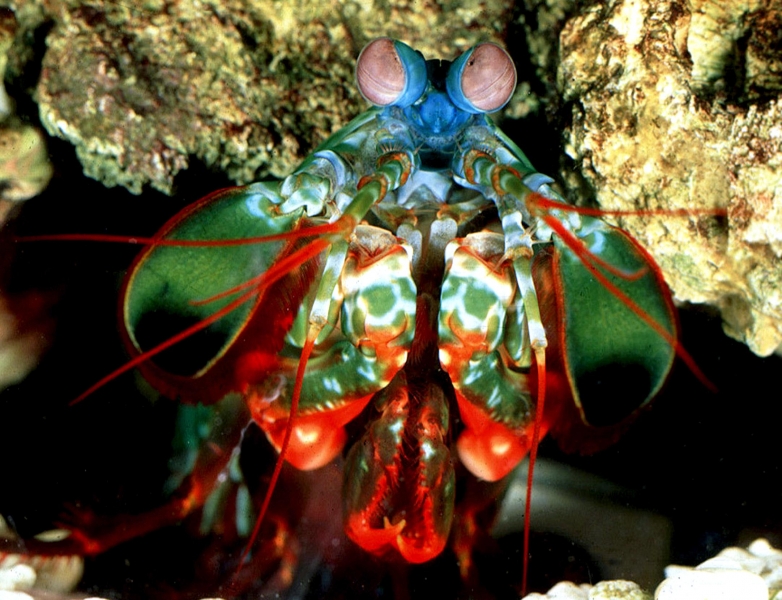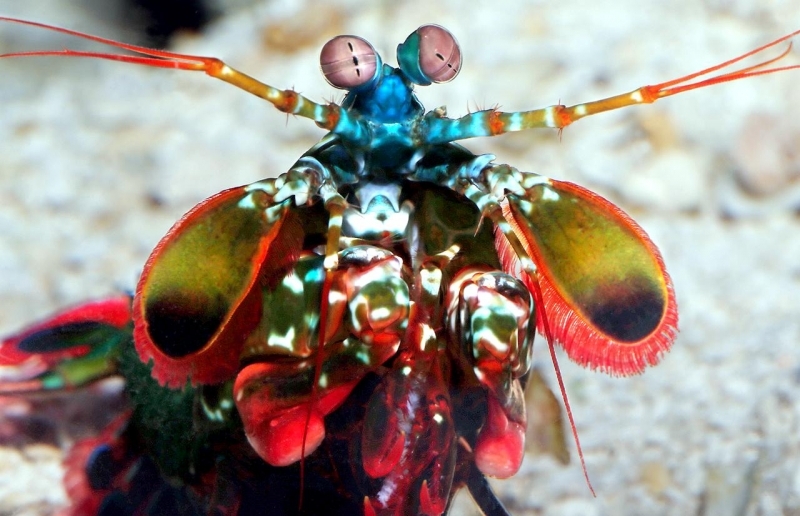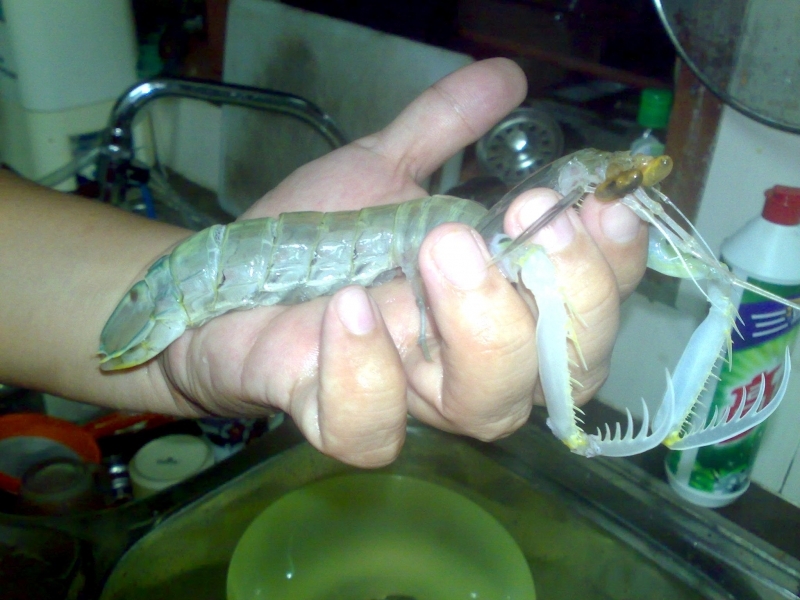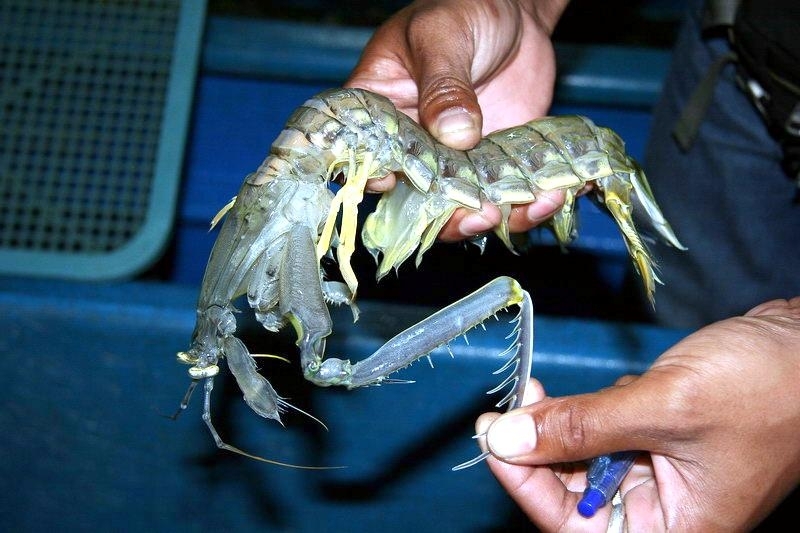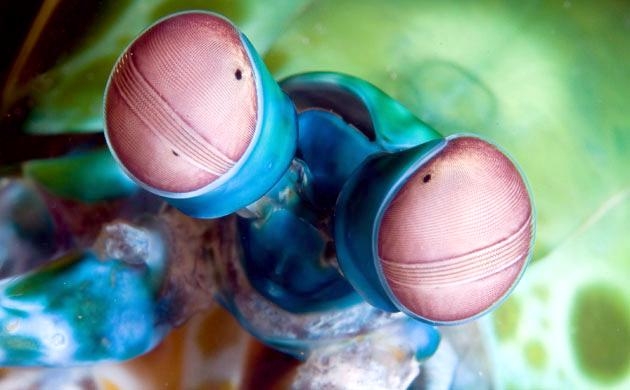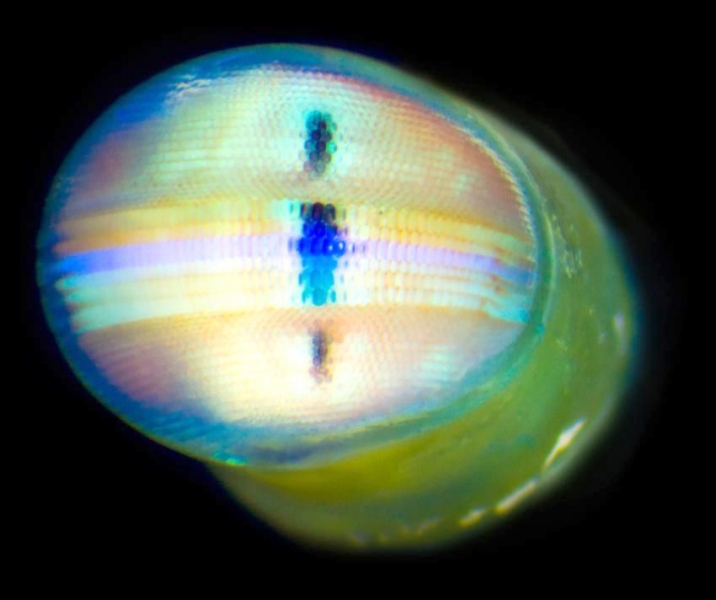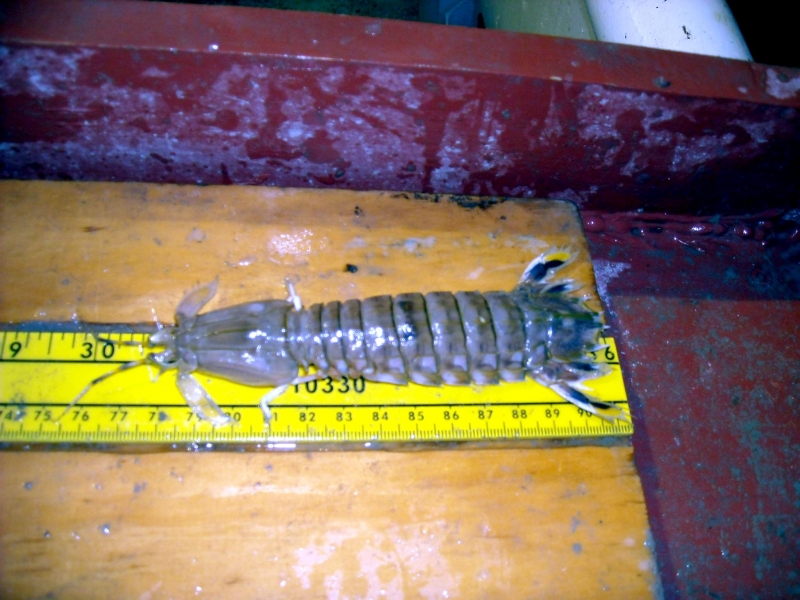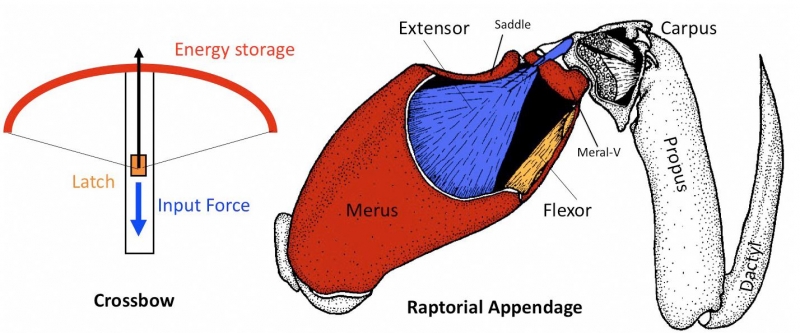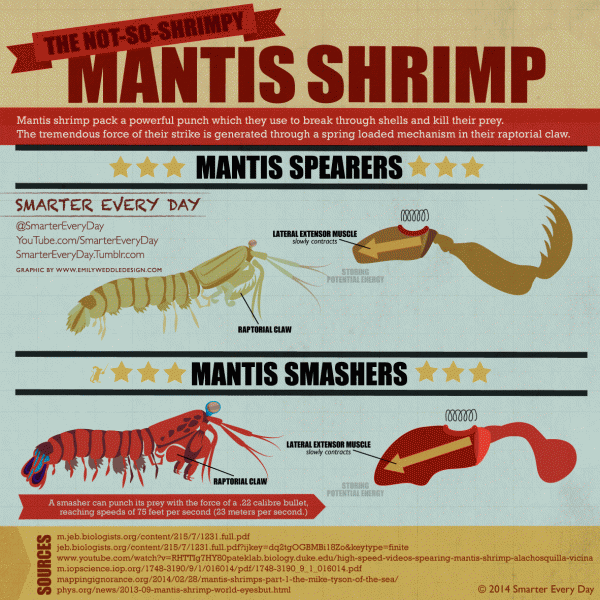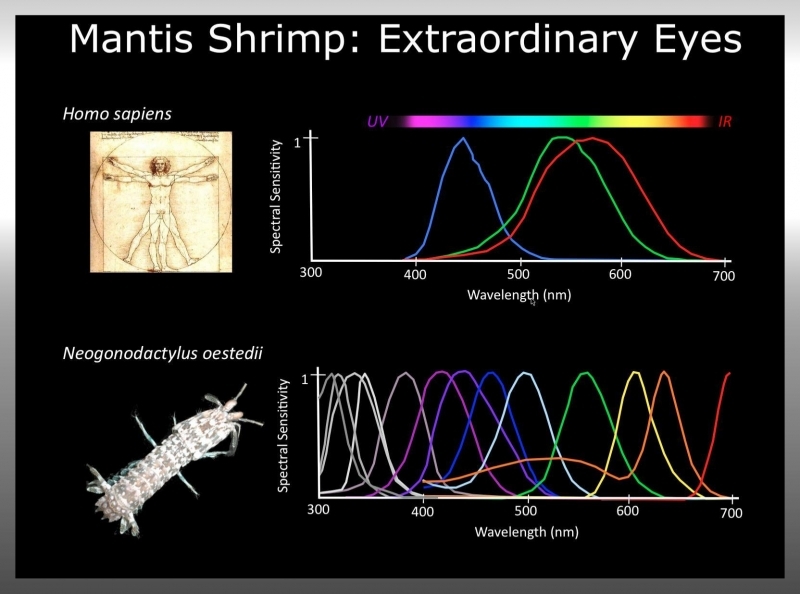“Odontactylus scyllarus”
What animal strikes faster than a Cheetah, has the eyesight of an Bald Eagle, is almost as ferocious as a Great White Shark and looks like a cross between an insect and a lobster? It’s the Mantis Shrimp? Indeed, the beautiful marine animals that belong to the stomatopods family, are among the most vicious creatures on earth. A distant cousin of crabs & lobsters, the 400 known species of Mantis Shrimp that can be found in shallow tropical or sub-tropical waters across the world, range in size from just an inch long to over a foot. However, they are willing to take on targets many times their size ranging from fish to octopus to even human. Based on their mode of attack, they are divided into 2 categories, “smashers” & “spearers”. As the name indicates, smashers pound their enemies by launching up to 4 clubs simultaneously at 75 feet per second, stunning their prey into unconsciousness and then dismembering them for good measure. Spearers, who make up a majority of the Mantis Shrimp population, attack by unleashing spiky-appendages to impale their prey. While not as fast as the smashers, these speedy spikes can lash out in an impressive 20-30 milliseconds. Smashers hunt by seeking out sedentary hard-shelled prey and then beating them until they get to the soft, edible interior, spearers lurk inside their burrows and then ambush the unsuspecting animals, as they swim by. Not impressed? How about if you found out that these are the fastest predatory strikes of any animal on the planet and that their speed and force results in super-heating the surrounding water to 8,500 degrees, nearly as hot as the surface of the sun! To put in perspective, if a human was able accelerate his/her arms at 1/10th of this speed, he/she could throw a baseball all the way into orbit around our planet!
How is something this tiny capable of unleashing such force? Turns out that invertebrates have a more flexible muscle structure than humans, which allows them to generate incredible force within tiny muscles. The Mantis Shrimp has a spring that they can load using an extremely powerful, but slowly contracting muscle. When it’s time to strike, a latch releases all that energy in an extremely short time. This means that the appendage or club that the Mantis shoots out, comes zooming at super high speeds and acceleration. The rapid pace not only makes a huge impact on the prey but also causes the water around to cavitate or vaporize. When these vapor bubbles collapse they create a small implosion in the water resulting in heat, light & sound. The tiny bubbles are so destructive that they have been known to blast holes in any metal boat propellers that happen to be in the area. While the Mantis Shrimp’s prey won’t feel this intense fleeting heat, the force of the shock wave that follows will usually knock them out cold. Gruesomely, the Mantis Shrimp seems to have techniques for different victims: when sparring with crabs for instance, the shrimp will first knock off its enemy’s claws, then amputate its limbs to ensure immobility, before dragging the pieces into its burrow and feasting on the meat.
Because this tiny marine animal is always dealing with much larger predators, it knows that even the slightest advantage can mean the difference between life & death. This means that the Mantis Shrimp often attacks indiscriminately, whether the visitor swimming by is a threat or just out for a stroll. The worst part is that the arthropods have the power to regularly molt and build new sets of clubs and spears to replace ones that are worn out. It is no wonder that the Mantis Shrimp has earned a reputation for being quite the aggressor and that researchers have spend countless hours studying them to get ideas about how to develop advanced body armor for the military. The irony is that as ferocious as they are to their enemies, these marine dwellers lead a curiously domesticated and loving lifestyle. They have evolved monogamous mating traditions, which means that pairs will live together in the same burrow for 30-40 years. The male Mantis Shrimp are tasked with the hunting & fishing, while the females dig the burrows and lay eggs. In some species, the female will lay 2 sets of eggs – 1 set that she guards and 1 set for her mate to carry, thus doubling their chance of viable offspring. While you might encounter a colorful Mantis Shrimp in the shallow waters of your local beach, you can be assured that you won’t ever see them in an aquarium. That’s because not only do they kill all their neighbors, but they also have been known to shatter the glass of the tanks they are housed in. Clearly, the Mantis Shrimp is surely not a creature to be trifled with!
